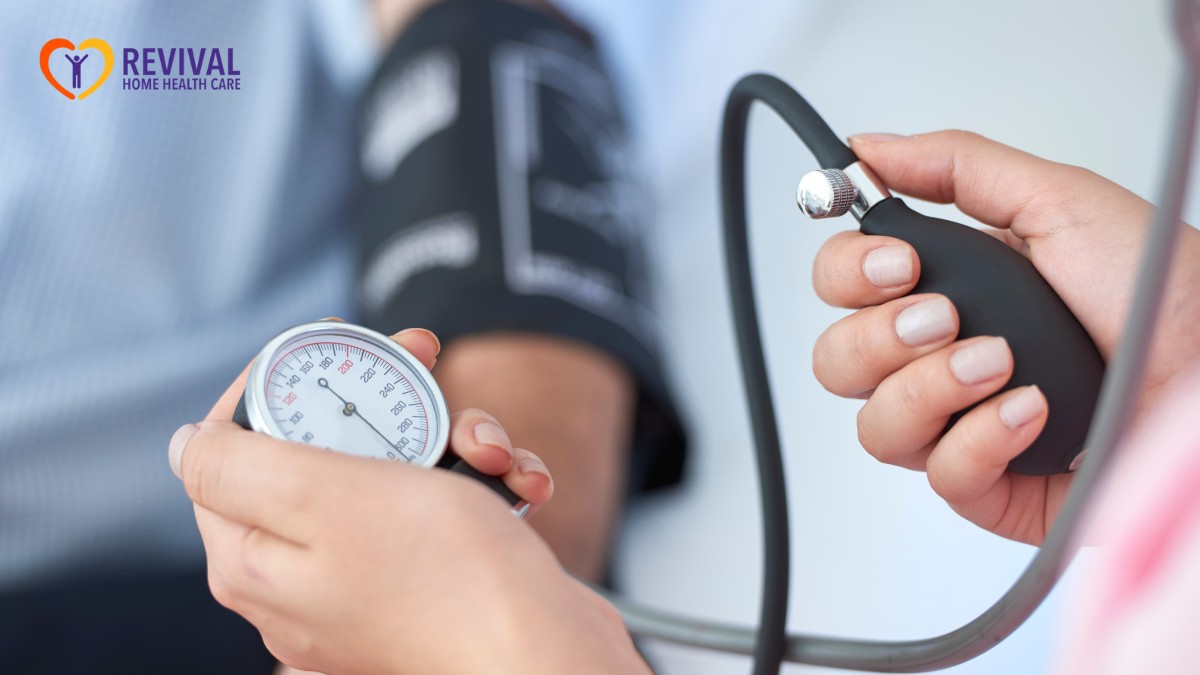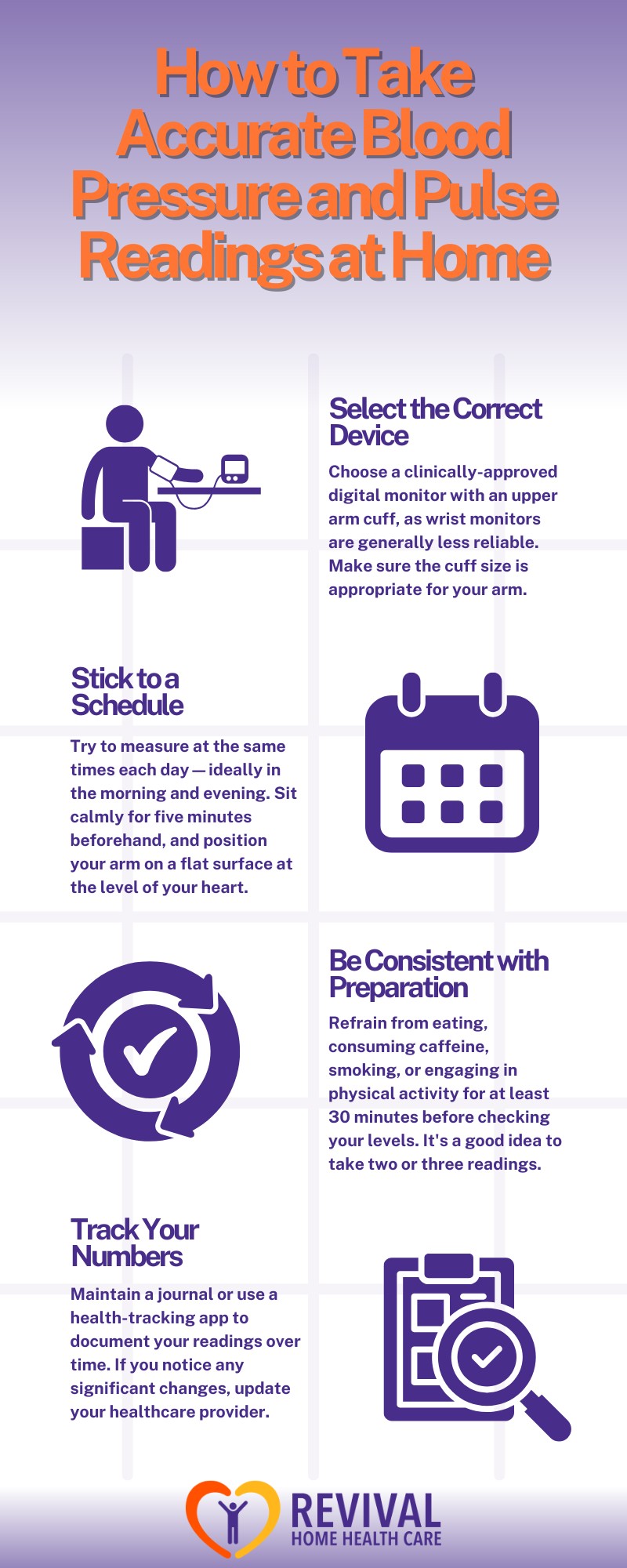Key Points:
- Monitoring blood pressure and pulse daily can help detect early signs of heart disease or complications.
- Understanding what your readings mean and how lifestyle choices affect them is essential for managing your health.
- Home checks empower individuals with chronic conditions, especially heart failure, to respond to warning signs sooner.
You know that feeling—when your chest feels a little tight, or your heart races more than usual. You pause, wondering if it’s just stress… or something more serious. That uncertainty can be scary, especially when your health is already something you’re watching closely and you’re unsure when to seek professional help.
Why Monitoring Your Blood Pressure and Pulse Matters
Many people don’t realize that high blood pressure and irregular pulse rates often show no obvious symptoms. That means serious health problems can be brewing quietly. Daily monitoring gives you a window into what’s going on inside your body—before it’s too late.
Blood pressure (BP) and pulse rate are two of the most important vital signs. They tell you how well your heart is functioning and how hard it’s working. When tracked consistently, these simple numbers can offer early warnings about conditions like hypertension, arrhythmias, or heart failure.

Understanding Blood Pressure: What Do the Numbers Mean?
Blood pressure is recorded as two numbers: systolic and diastolic. The systolic number (top) measures pressure during a heartbeat, while the diastolic number (bottom) measures pressure between beats. A typical healthy reading is around 120/80 mmHg, but your ideal range may differ depending on your medical history.
Elevated readings over time may indicate hypertension, which can damage blood vessels and increase the risk of stroke or heart attack. On the other hand, readings that are too low might suggest hypotension, leading to dizziness or fainting. Knowing what’s normal for you helps you and your healthcare provider detect changes quickly—supporting your safety and promoting independent living.
Pulse Checks: What Is Your Heart Trying to Tell You?
Your pulse rate, or heart rate, measures how many times your heart beats per minute. For most adults, a resting heart rate between 60 and 100 beats per minute (BPM) is considered normal. However, consistently high or low pulse rates may suggest an underlying problem.
Bradycardia (low heart rate) and tachycardia (high heart rate) can both be signs of cardiovascular distress, especially when paired with symptoms like shortness of breath or chest pain. Daily checks allow you to notice changes in your baseline.
Also, note the rhythm. Is your heartbeat regular, or does it sometimes skip or flutter? These can be early signs of arrhythmia, which may require further evaluation.
Who Should Be Checking Daily?
Daily blood pressure and pulse checks aren’t just for seniors or people already diagnosed with heart disease. You might benefit from daily monitoring if:
- You have hypertension or prehypertension.
- You’ve been diagnosed with heart failure or another cardiovascular condition.
- You’re on medications that can affect blood pressure or heart rate.
- You have diabetes, chronic kidney disease, or sleep apnea.
- You’re experiencing symptoms like dizziness, fatigue, or palpitations.
- You’re recovering from a stroke or cardiac event.
Even those aiming for prevention can gain peace of mind and greater self-awareness through consistent monitoring.
How to Take Accurate Blood Pressure and Pulse Readings at Home
Getting reliable results depends on how you take your readings. Here’s how to do it the right way:

With just a few minutes a day, this routine becomes second nature—and it can provide important insights into your heart health.
How Daily Monitoring Helps Manage Chronic Conditions
Daily BP and pulse checks are not just about catching emergencies. They provide a baseline. From there, you and your care team can make informed decisions.
Spotting Trends Before Symptoms Appear
Blood pressure doesn’t spike randomly—it often follows a pattern. By tracking these trends, you may discover that your BP rises after certain meals, during stressful days, or when you skip medications.
Medication Management
Have you ever wondered if your medication is working? Daily readings can help determine whether your dosage needs adjusting.
Supporting Lifestyle Changes
Trying a new diet or starting a walking routine? Watching how your BP and pulse respond can be motivating—and guide you to what’s truly helping.
Emotional and Mental Benefits of Daily Checks
Aside from the physical health benefits, checking your blood pressure and pulse daily can reduce anxiety for many people. When you know your numbers and understand what’s normal for you, you feel more in control.
That sense of empowerment can be a powerful tool in managing chronic illness. It also helps you know when you do need to reach out for help—without second-guessing or waiting too long.
Common Mistakes to Avoid
Even with the best intentions, many people unknowingly make mistakes when monitoring at home. Be aware of these common pitfalls:
- Checking immediately after exercise or a stressful moment. Wait until you’re calm.
- Using a cuff over clothing. Always apply the cuff directly on your bare arm.
- Ignoring symptoms just because the numbers seem “normal.” Listen to your body.
- Taking only one reading. Always take two or three and average them.
Avoiding these can improve the reliability of your tracking.
When to Call Your Doctor
Daily checks are for monitoring—not diagnosing. But if you notice:
- Blood pressure consistently above 140/90 or below 90/60
- Pulse consistently under 50 BPM or above 110 BPM
- Irregular heartbeats or skipped beats
- Chest pain, dizziness, or shortness of breath
…it’s time to contact your healthcare provider. Don’t wait for symptoms to become severe. Your records will help your provider make quicker, more accurate assessments.
It’s About Daily Awareness and Long-Term Care
Checking your blood pressure and pulse daily may seem like a small habit, but it can be a game-changer. It provides clarity, reveals patterns, and supports both prevention and chronic condition management—especially when it comes to your heart.
Health isn’t just personal—it’s communal. Encourage family members, especially older adults or those with chronic conditions, to adopt this daily practice. Offer to help set up their monitors, show them how to log readings, and check in regularly. This small act can make a big difference in preventing emergencies and fostering long-term wellness.
Take the Next Step with Professional Support
If you or a loved one is managing heart failure, don’t go through it alone. At Revival Home Health Care, we offer compassionate and reliable heart failure home care in New York. Our team understands the importance of daily monitoring and personalized support in the comfort of your home.
Our care professionals help track vital signs, recognize early warning signs, and coordinate with your physicians—so you can focus on living, not just managing. Contact us today to learn how our home care services can support your heart health journey.


 75 Vanderbilt Ave Staten Island, NY 10304
75 Vanderbilt Ave Staten Island, NY 10304 info@revivalhhc.org
info@revivalhhc.org 718.629.1000
718.629.1000